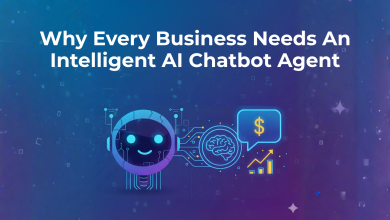
A Strategic Perspective for Financial Institution Leaders
Artificial intelligence (AI) has become essential in the financial services industry. Institutions that have adopted AI-enhanced fraud detection and compliance systems are preventing more fraud, recovering improper payments, and consistently outperforming peers that rely on legacy rule-based approaches.
Comprehensive AI-driven compliance programs make operations more efficient, especially by reducing false alarms, which helps in spotting complex financial crimes better. By cutting unnecessary alerts, institutions save directly on investigation costs. By improving detection accuracy, they lower the likelihood of regulatory action. And because AI platforms scale with transaction growth, they provide a sustainable compliance model that grows alongside business demand.
From Rules-Based Monitoring to AI-Powered Compliance
For decades, compliance monitoring relied on static thresholds and deterministic rules. These systems were blunt instruments: they captured obvious violations but produced overwhelming false positives, burdening compliance teams with unproductive investigations.
Modern AI implementations mark a significant advancement. Machine learning architectures now combine:
- Supervised learning to recognize known typologies.
- Unsupervised learning to detect unknown anomalies.
- Natural language processing (NLP) to interpret regulatory texts and manage KYC and screening processes.
These advances rest on mature technical infrastructure. Real-time streaming frameworks like Apache Kafka enable microsecond-latency processing of transaction flows. Edge computing allows immediate alerts at the branch or endpoint level. Current AI-driven AML solutions achieve over 90% accuracy in real-time suspicious activity detection, making it feasible to continuously monitor billions of transactions.
The defining feature of today’s systems is contextual analysis. Instead of evaluating transactions in isolation, AI platforms incorporate customer profiles, geolocation data, relationship networks, and historical behavior. This holistic view exposes layering schemes, structured transactions, and mule networks that previously required extensive manual investigation. While rule-based systems monitor a handful of variables, AI can simultaneously process thousands, dramatically enhancing precision and scope.
AI in Anti-Money Laundering and Transaction Monitoring
AML remains the most mature application of AI in compliance. The benefits span customer due diligence, sanctions screening, and suspicious activity monitoring.
- Onboarding and KYC: AI-powered identity verification using biometrics and document analysis reduces verification time by up to 50% while improving accuracy.
- Dynamic risk scoring: Following FATF guidelines, models regularly update customer risk scores as their behavior changes, helping institutions focus on the most serious risks.
- Sanctions screening: AI-driven contextual analysis and fuzzy name-matching reduce false positives from as high as 95% in legacy systems to below 20%, allowing investigators to focus on actual threats.
- Suspicious activity monitoring: Behavioral analytics establish baselines for each customer, detecting subtle deviations. Cross-channel correlation ties together digital and physical touchpoints, catching complex laundering schemes that span multiple channels.
For large institutions, these improvements translate into millions in annual savings and more actionable suspicious activity reports, strengthening credibility with regulators.
AI systems analyze multiple variables simultaneously, including amounts, timing, frequency, counterparties, and geolocation, to detect velocity patterns and anomalies. Network analysis identifies hidden relationships, exposing mule networks and layering tactics.
Cross-border monitoring has grown more sophisticated as well. AI tools now scan SWIFT transactions in real time, monitor cryptocurrency flows where they intersect with traditional finance, and oversee trade finance activities such as letters of credit. This breadth provides comprehensive oversight across payment types and jurisdictions.
Regulatory Alignment Across Jurisdictions
Global regulatory compliance remains complex, but AI platforms ease the burden. Modern systems automatically map requirements across multiple regimes, including the EU’s AMLD6, the UK’s Money Laundering Regulations, and AUSTRAC’s standards in Australia. Automated mapping helps ensure consistency while reducing the workload for compliance teams operating in diverse markets.
Internationally, regulators are signaling cautious support. The FATF encourages innovative technologies that strengthen risk-based monitoring. The Basel Committee emphasizes operational resilience, a principle that applies directly to AI-enabled systems. In the EU, the AI Act will classify financial AI applications as “high-risk,” requiring transparency and strong governance. In the U.S., agencies such as the OCC and FinCEN stress explainability and accountability.
Overcoming Implementation Challenges
Despite the proven benefits, successful adoption necessitates addressing real challenges.
- Data Quality and Integration
Compliance data often resides in legacy silos. Without unified, clean inputs, AI models underperform. Centralized data lakes and robust governance are prerequisites for success. - Model Transparency
Regulators expect explainable AI, not black boxes. Institutions must demonstrate why a model flagged an alert. Approaches include interpretable models, post-hoc explanation methods, and formal model governance frameworks. - Cost and Timeline
Enterprise-scale implementations typically require upfront technology investment, 12–18 month rollouts, and phased integration to minimize disruption. Staff certification and training are essential to maximize effectiveness. - Talent and Reskilling
Compliance professionals must gain new skills in AI model interpretation, system management, and advanced analytics. Planning often underestimates the importance of structured reskilling programs.
AI should first augment, not replace, investigators. Human-in-the-loop workflows build trust and accelerate adoption.
The Business Case and Strategic Advantage
The financial upside of AI in compliance is substantial. Reduced manual investigations generate direct cost savings. Avoiding even a single major AML violation, where fines can exceed $100 million, often justifies the entire implementation investment.
Beyond cost savings, early adopters gain competitive positioning advantages. Institutions that demonstrate leadership in regulatory technology strengthen reputational capital, attract regulator trust, and often shape industry standards. These first-mover benefits extend well beyond compliance into long-term strategic advantage.
Path Forward for Financial Leaders
Executives should approach AI adoption through a structured roadmap:
- Readiness assessment: Evaluate data quality, compliance processes, and technical infrastructure.
- Pilot programs: Begin with high-volume, low-risk use cases such as retail transaction monitoring to prove value.
- Scalable rollout: Expand into more complex areas once models are validated.
- Reskilling investment: Ensure compliance teams are trained to manage and interpret AI outputs.
- Strategic vision: Extend AI use beyond compliance into credit, operational risk, and consortium-driven intelligence sharing.
The convergence of rising regulatory complexity, increasingly sophisticated financial crime, and maturing AI technology has created a strategic imperative. Nearly three-quarters of financial institutions are already deploying AI for fraud detection, making adoption essential not only for effectiveness but also for competitive parity.
The question for leaders is not whether to implement AI, but how quickly and comprehensively. Institutions that act decisively will realize compounding benefits: stronger risk management, greater operational efficiency, and enhanced regulator trust.
The technology is mature, the business case is proven, and regulators are ready to engage. For financial institutions, the time for AI in compliance and fraud detection is now.





